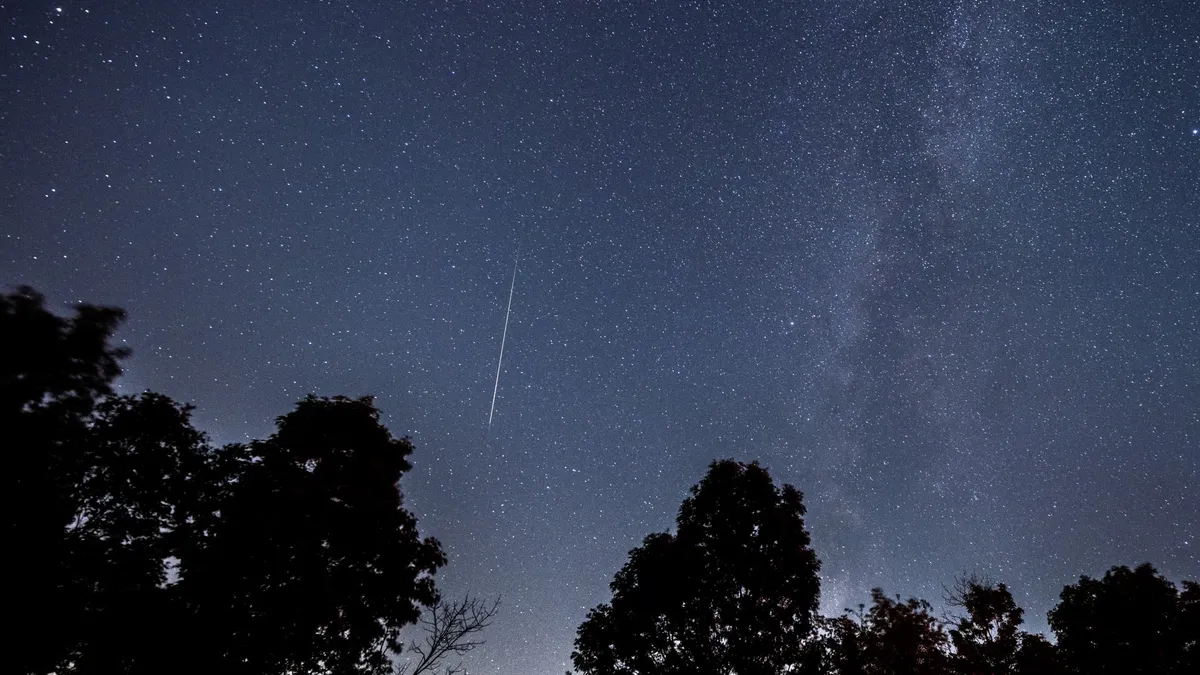
Each summer, amateur astronomers from around the globe eagerly anticipate the spectacular Perseid meteor shower. However, many often overlook four lesser-known meteor showers that peak between July 29 and August 16. This year, a waning gibbous moon—three days past the full moon phase—will significantly hinder visibility for the Perseids. Instead, why not seize the chance to observe these four other intriguing showers, most of which will be blessed with dark skies?
During summertime, meteors can be frequently spotted flitting across the night sky, especially between early July and the final week of August. From August 3 to 15, there are four distinct minor meteor displays, in addition to the Perseids, that will be active. Even casual stargazers during these nights are likely to witness a few shooting stars darting across the sky. Generally speaking, Earth experiences heightened meteoric activity in the second half of the year, and observers can expect to see twice as many meteors per hour during the predawn hours compared to the evening hours. This phenomenon occurs because, before midnight, Earth is on the trailing side of its orbit, requiring meteoric particles to travel faster than Earth to catch up. In contrast, after midnight, when we shift to Earth’s leading side, any particles on our orbital path will enter the atmosphere as meteors.
As meteors collide with Earth’s atmosphere at speeds ranging from 7 to 45 miles (11 to 72 km) per second, their kinetic energy quickly transforms into heat, light, and ionization, creating the short-lived streaks of light we know as shooting stars. For optimal viewing, all you need is your eyes and a bit of patience. The number of meteors a single observer can see in an hour is heavily influenced by sky conditions. The rates mentioned are based on visibility of stars up to magnitude +6.5—considered the threshold of naked-eye visibility—assuming you are an experienced observer and that the radiant is directly overhead.
The radiant is the point in the sky where the paths of meteor shower members intersect when plotted on a star chart. For reference, your clenched fist held at arm’s length roughly equals 10 degrees in the sky. If the radiant is 30 degrees above the horizon, the hourly rate is halved; at 15 degrees, it is reduced to a third.
Among the four minor meteor showers active in the coming weeks, the Kappa Cygnids stand out as particularly favorable for northern observers. The constellation Cygnus, from where these meteors appear, will be high overhead around 10:30 p.m., making it an excellent choice for night-long viewing.
The first of these showers is the Delta Aquarids, which has a broad three-day maximum from July 29 through 31. Activity has been noted as early as July 12 and extends to August 23. This shower consists of two distinct radiants—one in the northern hemisphere and the other in the southern—indicating two separate streams of celestial debris burning up in our atmosphere. Observers can expect to see up to two dozen swift, faint meteors per hour during this time. Additionally, the moon will be in a waxing crescent phase during the peak activity, setting well before midnight, which means optimal viewing conditions throughout the morning hours.
The debris from the southern Delta Aquariids is believed to originate from comet 96P/Machholz, a short-period comet that orbits the Sun approximately every five years. Discovered by Donald Machholz in 1986, this comet contributes to the annual meteor display.
The second minor shower, the Alpha Capricornids, begins around July 3, peaks on July 31, and runs until August 15. With moonset occurring at 11:00 p.m. on July 30 and the radiant crossing the meridian at 1:30 a.m., this shower is well-positioned for viewing this year, coinciding with the Delta Aquarids' peak. Although it averages only about five meteors per hour, the Alpha Capricornids are known for producing bright yellow fireballs, making them a spectacular sight.
Next is the Eta Eridanids, which can be detected from July 31 to August 19. At its peak on August 7, the moon will not set until 3:30 a.m., and the radiant will be gaining altitude in the southeast, leaving limited time for observations. Under good conditions, only about three meteors per hour are expected, which are related to dust trails left by a faint comet observed in 1852 by French astronomer Jean Chacornac.
Lastly, the Kappa Cygnids, which run from August 3 to 28, peak on August 16. Although this shower averages only three meteors per hour, it can reward careful observers with brilliant fireballs. The waning crescent moon will rise at 11:45 p.m., making the hours before midnight the best time to enjoy this shower, as the radiant will pass almost directly overhead by 10:30 p.m.
Data for these meteor showers is sourced from the International Meteor Organization (IMO) Meteor Shower Calendar for 2025, compiled by Jürgen Rendtel, and the Royal Astronomical Society of Canada's Observer's Handbook, compiled by Margaret Campbell-Brown and Peter Brown. As we approach the Perseids in early August, stay tuned to Space.com for further updates and tips on how to make the most of your meteor-watching experience.